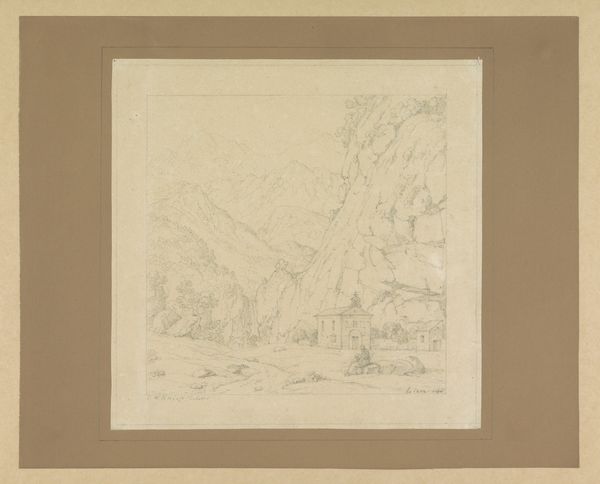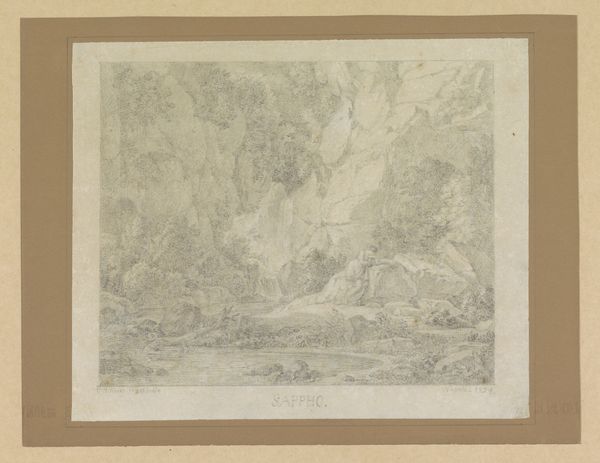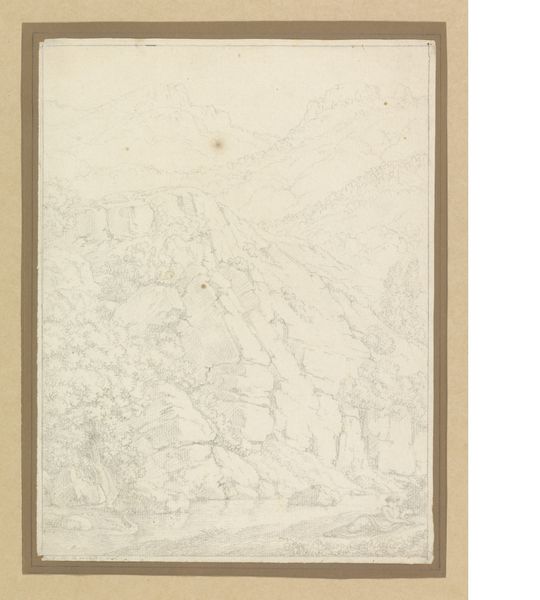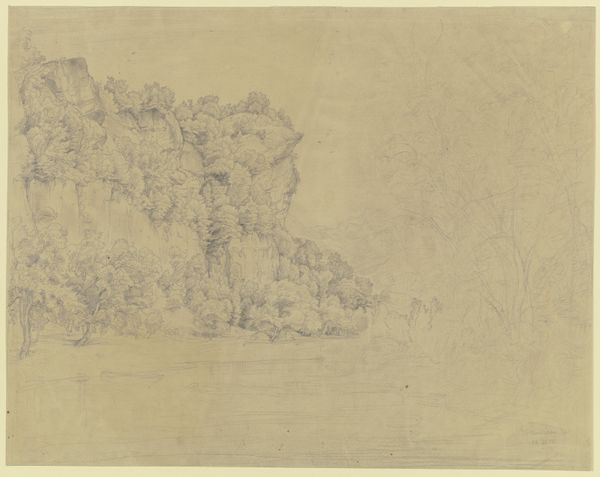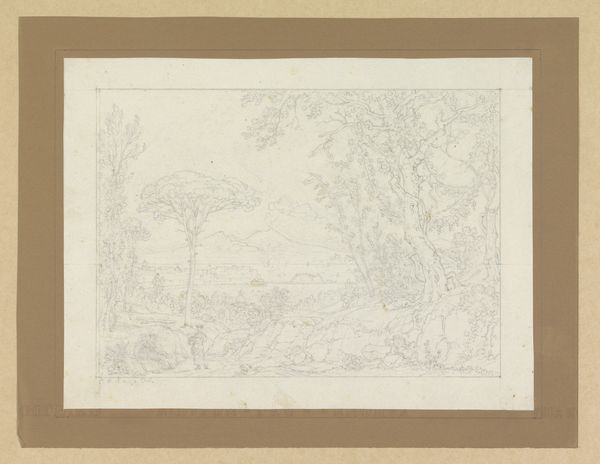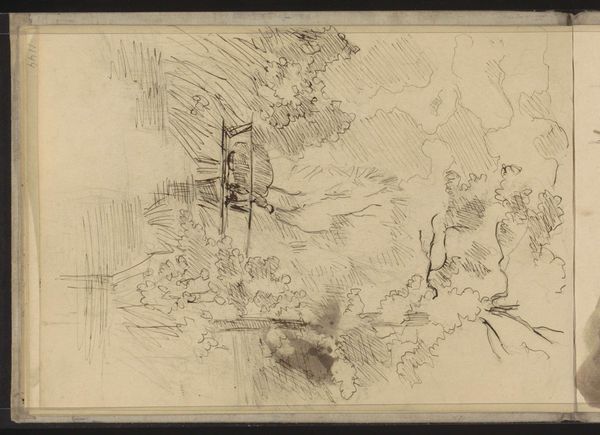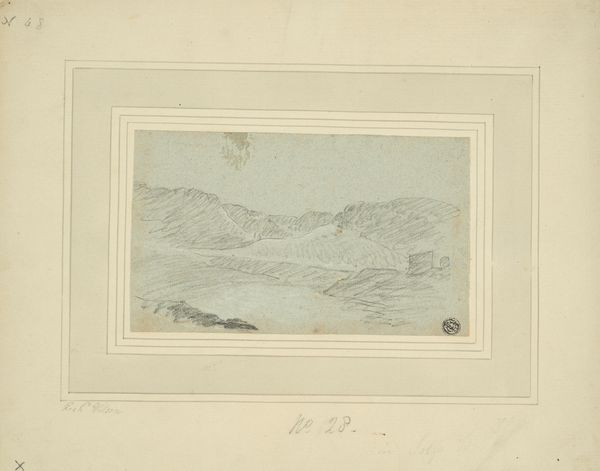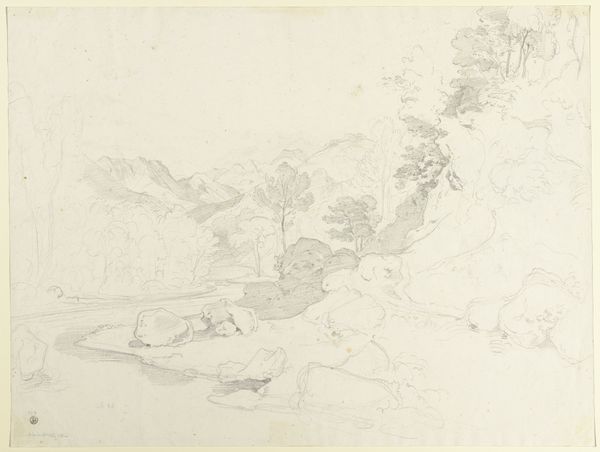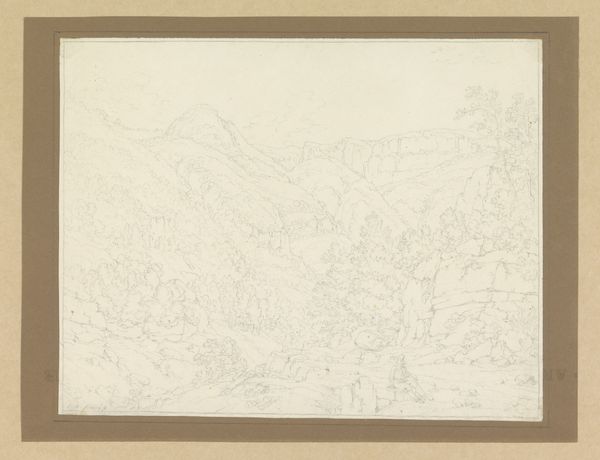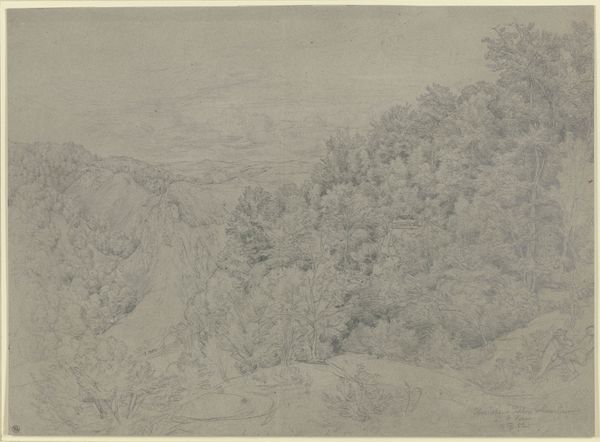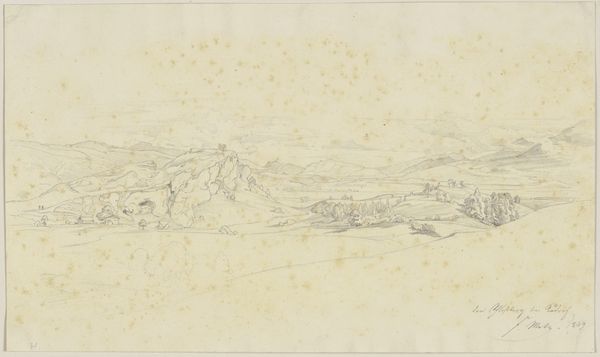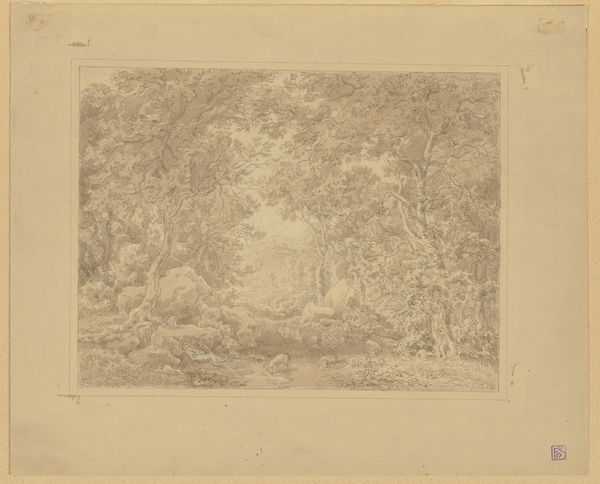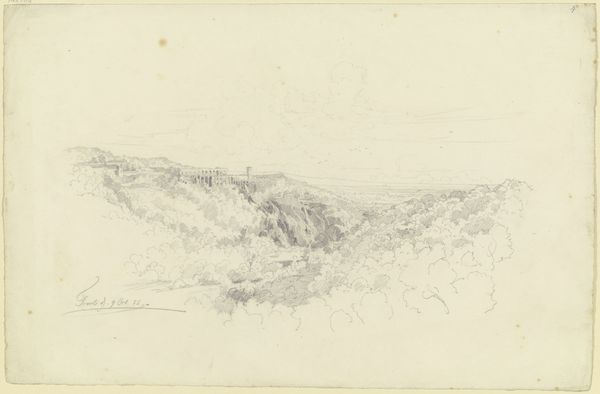
Dimensions: height 212 mm, width 170 mm
Copyright: Rijks Museum: Open Domain
Léopold Desbrosses created this Swiss landscape using engraving, a process where lines are incised into a metal plate, which is then inked and printed. This technique, requiring meticulous handwork, contrasts sharply with the industrial revolution transforming landscapes in the 19th century. The very fine lines of the engraving capture the grandeur of the Swiss Alps, emphasizing the weight and texture of the mountains. Look closely, and you'll notice how Desbrosses uses varying densities of lines to create depth and shadow, a testament to his skill. Engraving was traditionally used for reproduction, and the social significance lies in its ability to democratize images, making them accessible to a wider audience. The labor-intensive nature of engraving speaks to a pre-industrial work ethic, yet the image itself reflects a growing interest in landscape and nature, partly fueled by industrialization's impact on the environment. Considering the materials, making process, and social context helps us fully understand this artwork, challenging the notion that fine art exists in a realm separate from craft and the broader world.
Comments
No comments
Be the first to comment and join the conversation on the ultimate creative platform.
